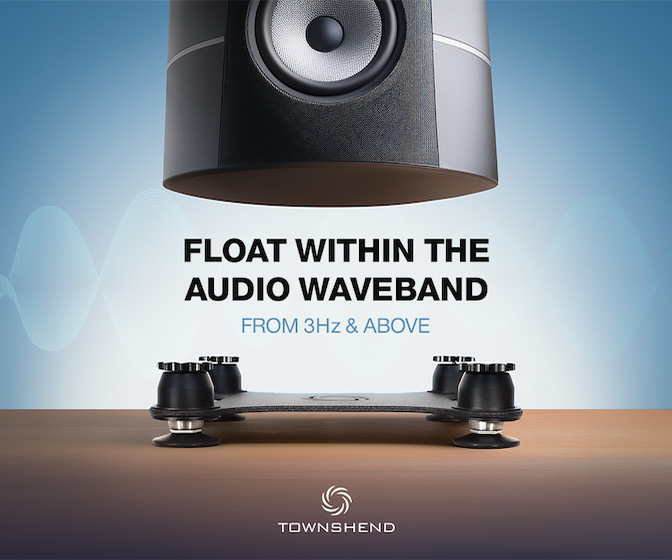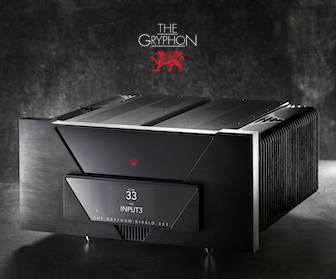Darcy James Argue's Big-Band Wonderland
The brilliant composer-conductor's 4th album is by far his best
Darcy James Argue has evolved over the past 15 years, into one of our era’s great big-band composers and leaders, second only to Maria Schneider and, increasingly, a force worth taking on the same level of seriousness. His 4th and latest album, Dynamic Maximum Tension—his first in six years and his debut on the Nonesuch label—is his best to date: a work of stunning versatility and complexity, but thoroughly accessible, borderline passionate, for all its intricate maneuvers.
When Argue emerged with his first album, Infernal Machines, back in 2009, at age 34, he called his band the Secret Society, labeled himself its “ringleader,” dressed in Victorian garb, and tagged the music “steampunk big band,” after the genre of postmodern fiction that tells futuristic stories taking place in the distant past. The band’s moniker has stuck, though the costumes are gone, and he no longer talks about “steampunk,” though he notes that the term’s meaning—its allusion to “retro-futurism”—still very much fits what he’s doing.
As he once explained to me, “It’s the idea of big bands as an antiquated form of music that evolved to fill a niche in their heyday but fell from popularity and are now the domain of eccentrics. I’m exploring what big-band music might sound like, if it had stayed popular and incorporated all the music that’s come along since—rock, grunge, hip-hop, everything.”
Classically trained at the New England Conservatory and something of a socio-esthetic visionary, Argue is more apt these days to draw on serialism, the wilder reaches of Duke Ellington, and Argentinian folk dances, though a screaming electric guitar, rock drum roll, and soulful bassline make appearances. Still, you get the idea: this is a composer whose exploration of musical language knows no boundaries. Yet his feel for jazz idiom is secure enough that you never feel lost; the rhythms are always dominant.
Rhythms may be Argue’s strong suit. Just as Maria Schneider has no peers—certainly not now, only a few in the past—for shaping the inner voices of stacked harmonies, Argue may be unmatched for his rhythmic cycles, crisscrosses, and how he weaves them into moods and melodies. An example: While listening to the album’s second track, “All In,” I was captivated by a trumpet-piano duet. The chords seemed to float above, beneath, all around the horn’s lovely melody, and I sent Argue an email, asking him what intervals, or patterns the pianist, Adam Birnbaum, was playing. Argue replied:
"The entire melodic and harmonic language of “All In” is based on the all-interval tetrachord—a set of four notes that contain within themselves every possible interval. (There are actually two of them, or four, if you invert them.) The all-interval tetrachord is most closely associated with the work of Elliott Carter, who used them extensively, but they are also structures that have a lot of affinity to jazz—at least, I happen to think so."
Indeed, they do, at least in Argue’s hands. I then asked him if he scored the piece with simultaneously differing time-signatures as they seemed rather fluid as well. He laughed that off as an impossible task but explained that, with the all-interval tetrachord,
"Each chord also has a rhythmic pattern associated with it. So when the piano first comes in at the top of the tune, the first two chords—let’s call them Chord A and Chord B—are associated with two different rhythmic patterns, both in 4/4. And then the next two chords—call them Chord C and Chord D—are associated with two more rhythmic patterns, both of them in 7/8. (In other words, the patterns for Chord C and Chord D are one eighth-note shorter)".
My point in quoting these emails at length isn’t to conduct a class in music theory or to let Argue show off his training. Rather, it’s to convey how deeply Argue engages with music theory and traditions—from vast, often unexpected sources—to weave his effects. “All In” is a transporting piece; there’s an air of magic and mystery to it; Argue’s brilliance is that he knows how to make magic from a bottomless bag of tricks with structure, rhythm, and harmony. You don’t need to know anything about tetrachords to feel what he’s doing.
All of Argue’s albums have had themes, or told stories. His maiden voyage, Infernal Machines, was a kaleidoscopic demo of the sounds he’d been testing in big-band workshops for nearly a decade—the timbral colors and dynamic contrasts that no one else was creating at the time. Brooklyn Babylon, commissioned by the Brooklyn Academy of Music, was a multimedia venture, orchestrating the tale of an immigrant squeezed out of his city by corporate skyscrapers. Real Enemies, also multimedia and much more experimental, delved into conspiracy theories as a product of political alienation. (The piece was split up into 12 chapters, so, as a neat joke, he structured the compositions on 12-tone technique.) This may sound all too grim, but the pieces were lively, even riveting, chock-a-block with surprises and wit.
With Dynamic Maximum Tension, Argue says in the liner notes, he is trying to battle off the “profoundly dystopian direction” in modern life, presenting 11 compositions—spread across two CDs, totaling more than 100 minutes of playing time—each dedicated to some positive influence in his life: Buckminster Fuller (who coined the phrase of the album’s title), Duke Ellington (the album’s longest piece, “Tensile Curves,” grew out of variations on “Diminuendo and Crescendo in Blue”), Alan Turing (in a piece called “Codebreaker”), and Bob Brookmeyer (his composition teacher at New England Conservatory, whose meticulous lessons influenced Argue and Schneider, among others).
There’s also “Single-Cell Jitterbug,” a spirited old-fashioned dance number, in the spirit of Cab Calloway, but revved up by the patterns of—and named after—Buckminster Fuller’s folding structure of eight triangles and six squares.
And there’s “Last Waltz for Levon,” a lovely tribute to Levon Helm, the late (and, to Argue’s mind, underappreciated) drummer for The Band: a wistful piece, nostalgic without sentimentality, triumphant major chords piercing through undercurrents of dissonance, capped by a gentle spin through “The Night They Drove Old Dixie Town” (very moving and wry, even though Helm hated the song).
Finally, there’s “Mae West: Advice,” another underrated character—a ribald revolutionary of early 20th century pop culture—whose aphorisms are sung by Cécile McLorin Salvant, a return of favor to Argue, who wrote the arrangements for Ogresse, Salvant’s masterful oratorio of a few years back. (I saw it twice in concert; it’s currently being made into an animated film.)
Throughout the album, Argue’s music teems with menace, apprehension, unresolved tension—but also, sometimes all at once, with joy, hope, exuberance: in short, the stuff of life.
The bandmembers, many of whom have played with Argue from the beginning, are in top form, both as an ensemble and as soloists. (None of Argue’s earlier albums had nearly so many terrific solos.) I hesitate to single out anyone, because they’re all worthy.
Finally, the sound quality is excellent. The engineer, Brian Montgomery, has worked in the past with Argue (and Maria Schneider, as well as Donald Fagen and other obsessives of the recording studio), and, as he told me in a phone conversation, he “wasn’t reinventing the wheel with this one.” He recorded in ProTools 96/24 and added little artifice. He put Neumann U-47 and -67 mics on the woodwinds, RCA-44s on trombones, Coles on the trumpets, Neumann M149 tube mics on the bass and piano, and a mix of AKGs and Shures on the drumkit. Everything is clear, crisp, colorful, and dynamic.











































